MIDI to Polyphonic Control Voltages, August 2020
After calibrating the VCOs the next thing was to get a keyboard connected.
The Midimuso Octex seemed like a nice way of converting MIDI to CV. After testing one, I ordered two more, so that the three chained together would provide 12 note polyphony with pitch, velocity and gate outputs.
There are also sockets out for the pitch bend and modulation wheels, although passionate wheel wiggling does tend to result in notes getting stuck. There are also circumstances where the digital steps in the wheels can be heard, but I'm not that bothered as I have four analogue joystick modules for that sort of thing.
Changing modes on the Octex board is a bit fiddly, as you need to send a program change message from something like Ableton. Much easier to connect a selector switch to an Arduino Pro Mini, which simply sends the correct message as you turn the switch.
A USB to DIN MIDI converter means that only one cable is needed for keyboard power and data.
I wired the gate outputs to some CGS LED drivers, as flashing lights are cool.
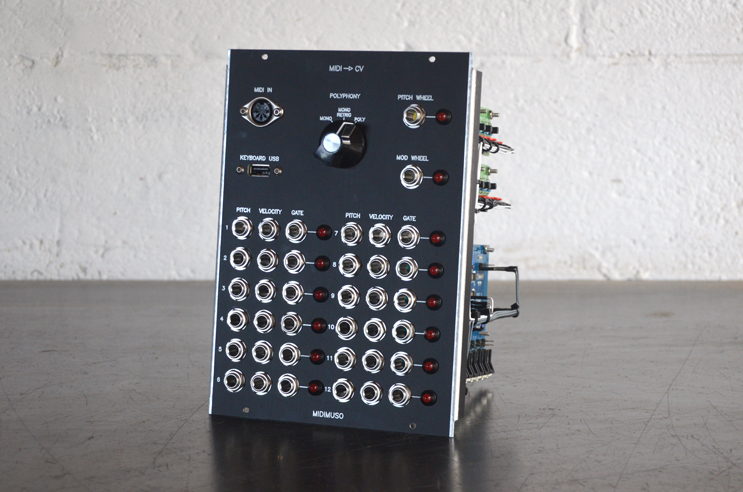
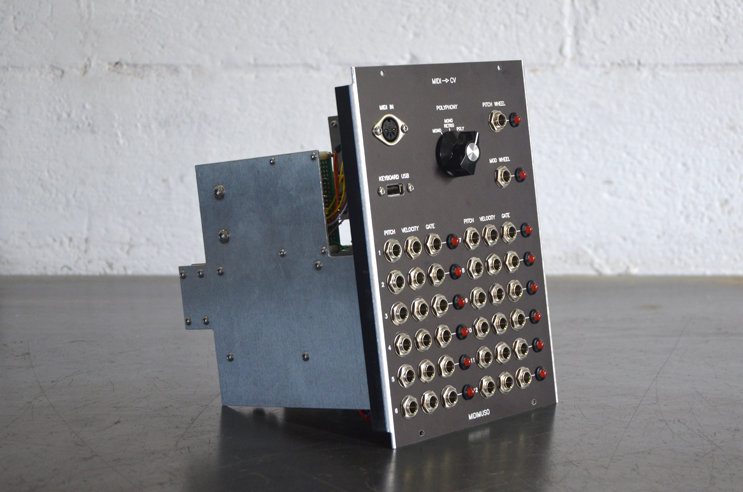
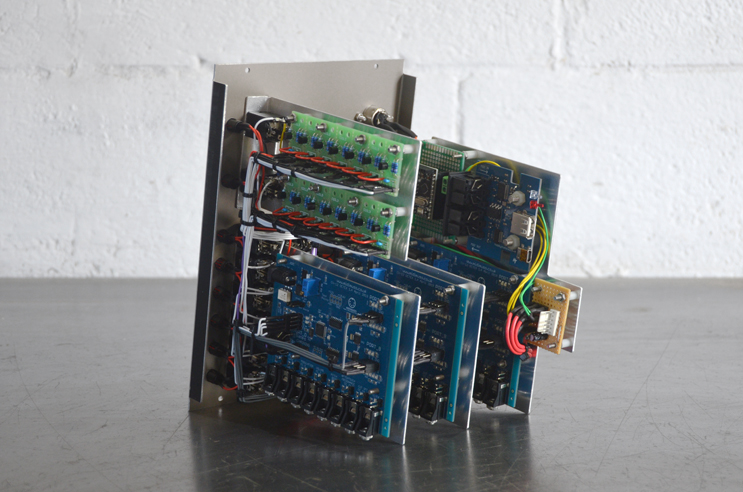
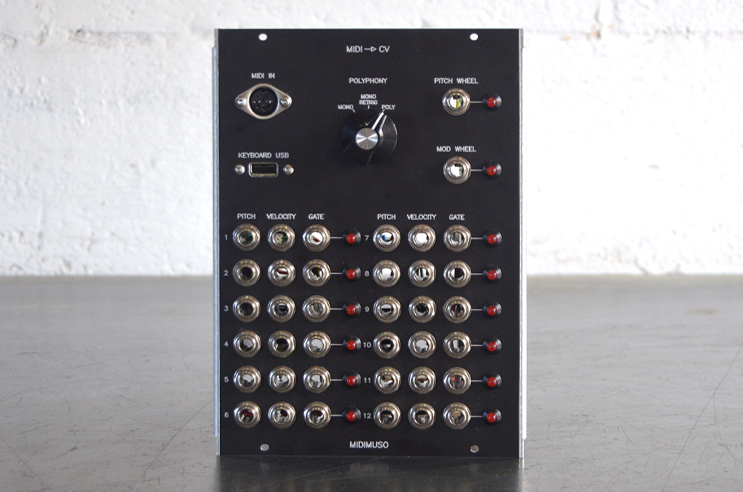
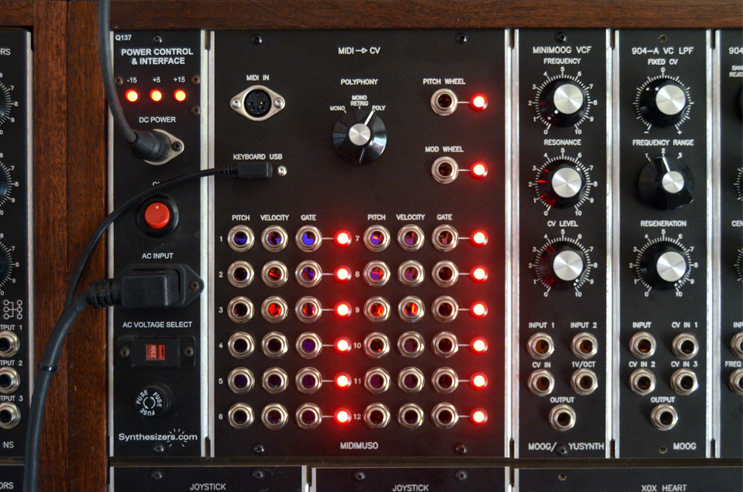
After concentrating on the electronics, realised I totally forgot to make a stand for sheet music!
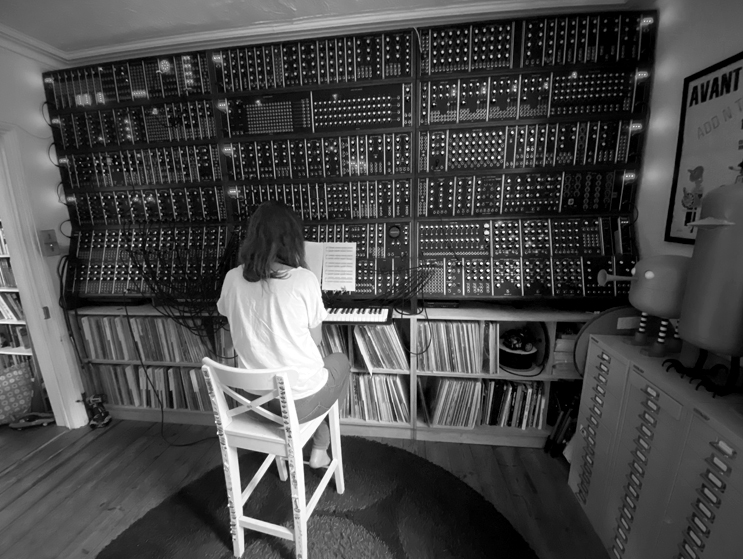
Octex MIDI to CV converter: Midimuso
MIDI USB to DIN converter: HobbyTronics
Sam's version of the Midimuso, for which you can buy a PCB: LMNC
Useful panel mounted USB socket: RS
CGS LED driver boards: Elby Designs
(Or just make your own with BC547 transistors)
Arduino MIDI program change: Adapted from Aaron Lyon's code